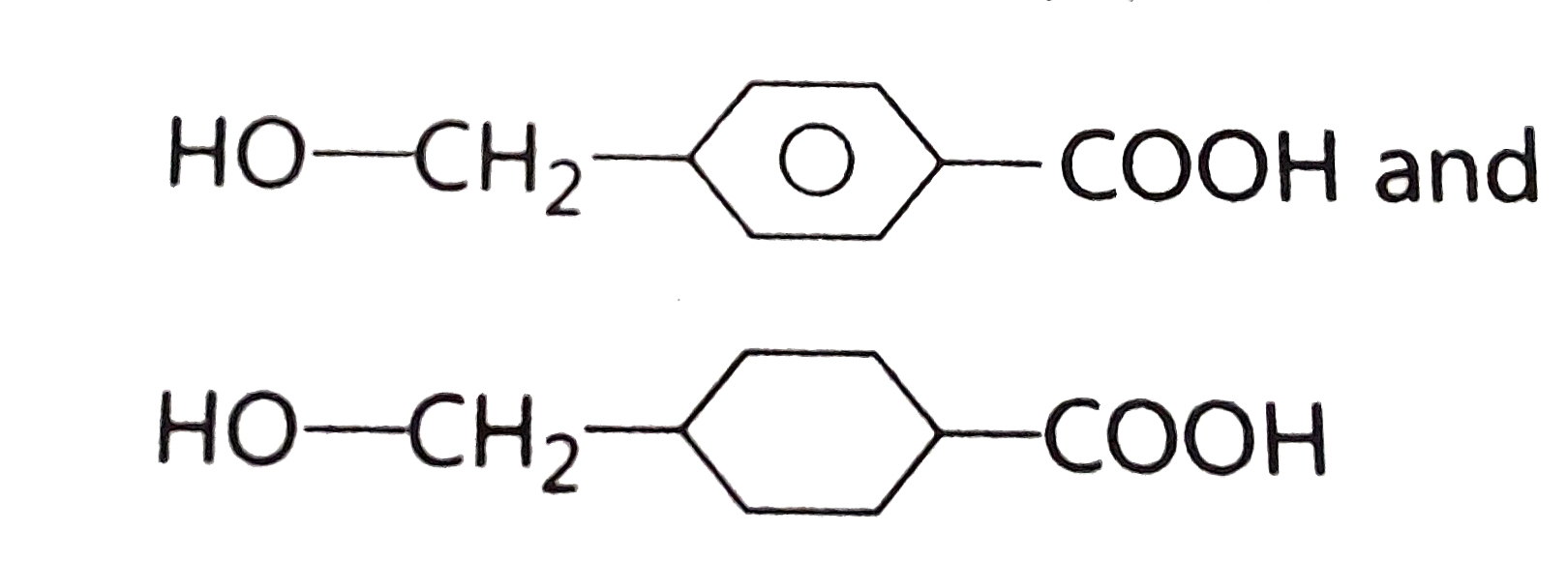A homopolymer is obtained by polymerisation of :
One type of monomer units
Two types of monomer units
Either of these
None of these
The correct Answer is:A
To solve the question "A homopolymer is obtained by polymerization of:", we need to understand the definition of a homopolymer and the process of polymerization.
1. Understanding Homopolymer:
- A homopolymer is a type of polymer that is made from only one type of monomer. The prefix "homo-" means "same" or "one," indicating that all the repeating units in the polymer chain are identical.
2. Identifying Monomers:
- A monomer is a small molecule that can join together with other monomers to form a polymer. For example, ethylene (C2H4) is a common monomer that can polymerize to form polyethylene, a homopolymer.
3. Polymerization Process:
- Polymerization is the chemical process in which monomers link together to form a polymer. There are different types of polymerization, such as addition polymerization and condensation polymerization. In the case of a homopolymer, the process involves the same type of monomer repeating throughout the polymer chain.
4. Examples of Homopolymers:
- Some common examples of homopolymers include:
- Polyethylene (from ethylene monomers)
- Polypropylene (from propylene monomers)
- Polystyrene (from styrene monomers)
5. Conclusion:
- Therefore, a homopolymer is obtained by the polymerization of a single type of monomer.
Final Answer:
A homopolymer is obtained by the polymerization of one type of monomer.
---
- A homopolymer is a type of polymer that is made from only one type of monomer. The prefix "homo-" means "same" or "one," indicating that all the repeating units in the polymer chain are identical.
- A monomer is a small molecule that can join together with other monomers to form a polymer. For example, ethylene (C2H4) is a common monomer that can polymerize to form polyethylene, a homopolymer.
- Polymerization is the chemical process in which monomers link together to form a polymer. There are different types of polymerization, such as addition polymerization and condensation polymerization. In the case of a homopolymer, the process involves the same type of monomer repeating throughout the polymer chain.
- Some common examples of homopolymers include:
- Polyethylene (from ethylene monomers)
- Polypropylene (from propylene monomers)
- Polystyrene (from styrene monomers)
- Therefore, a homopolymer is obtained by the polymerization of a single type of monomer.
A homopolymer is obtained by the polymerization of one type of monomer.
Topper's Solved these Questions
- POLYMERS Book:NARAYNAChapter:POLYMERS Exercise:C.U.Q ( SOME IMPORTANT POLYMERS )
Explore 17 Videos
- POLYMERS Book:NARAYNAChapter:POLYMERS Exercise:C.U.Q ( BIOPOLYMER )
Explore 3 Videos
- POLYMERS Book:NARAYNAChapter:POLYMERS Exercise:CHECK YOUR GRASP
Explore 7 Videos
- PERIODIC TABLE Book:NARAYNAChapter:PERIODIC TABLE Exercise:All Questions
Explore 573 Videos
- PRACTICAL ORGANIC CHEMISTRYBook:NARAYNAChapter:PRACTICAL ORGANIC CHEMISTRYExercise:SUBJECTIVE_TYPE
Explore 1 Video
Similar Questions
Knowledge Check
Polypropylene is obtained by polymerisation of:
ACH≡CHBCH2=CH2CCH3−CH=CH2DCH3−C≡CHPVC is formed by polymerisation of
AetheneB1-chloropropeneCpropeneD1-chloroetheneTeflon is obtained by the polymerisation of:
AmonofluoroetheneBdifluoroetheneCtrifluoroetheneDtetrafluoroethene
Vinyl Polymerisation
View SolutionTeflon is a polymer of the monomer or Teflon is obtained by the polymerisation of
View SolutionAssertion (A) : Polyester and nylon are examples of linear polymers .
Reason (R) : Styron is obtained by polymerisation of styrene in the presence of benzoyl perodxide.
View SolutionPolypropylene can be obtained by polymerization of ________.
View SolutionPolythene is a resin obtained by polymerisation of
View Solution
